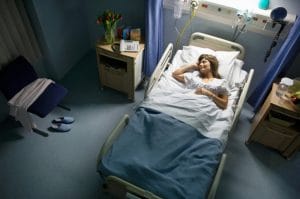This website uses cookies so that we can provide you with the best user experience possible. Cookie information is stored in your browser and performs functions such as recognising you when you return to our website and helping our team to understand which sections of the website you find most interesting and useful.

Susan E. Mazer, Ph.D. Blog
Thoughts and ideas on healthcare
Hi, and welcome to my blog! I'm Susan E. Mazer -- a knowledge expert and thought leader on how the environment of care impacts the patient experience. Topics I write about include safety, satisfaction, hospital noise, nursing, care at the bedside, and much more.
Reducing Disquiet at Night Requires More than White Noise
March 23, 2018
Apprehension writes full stories of an uneasy future in the middle of the night.
Sleep is elusive when subjected to medications, high level of acuity, strange sounds and strange people.
So, can there be any “quiet at night?”
Disquiet is its opposite, but not caused by external events. Rather, disquiet is generated in the intimacy of the patient experience.
Noise Masking Not Enough to Care for Patients at Night
We are often asked if white noise is a good way to help patients sleep and cover the erratic noises common at night in a hospital. My response is that caring for patients overnight requires more than noise masking.
For this reason, we have always provided specific nighttime programming on The C.A.R.E. Channel. And, its intent is to do more than mask noise.
With its midnight starfield and calming music, The C.A.R.E. Channel’s nighttime programming gives cues that it is indeed night. It also encourages a state of wonder that the night sky offers and has music that soothes and promotes restfulness during the long night hours.
What Causes Patients Not to Sleep?
The causes of sleeplessness in the hospital can be simple or complex.
For example, patients may be uncomfortable due to post-operative pain and they could be ruminating about the past or worried about the future. They may be taking medication that disturbs their sleep, or they may be fasting for a procedure the following morning.
There are so many variables, that to assume “not being able to sleep in the hospital” is caused by any general state goes against all we know about the patient experience.
ICU insomnia is not uncommon, as I wrote in 2014. In fact, nocturnal ruminations were identified as a significant cause of insomnia, as well as medications, noise, and disruptions for other reasons.
Also, the lack of the many resources available during the daylight hours at night is profound. Social support comes to almost a halt. There are fewer people around and fewer opportunities for positive distractions to mute the mind-chatter that fills a patient’s head at night.
In any case, patients lying awake in the hospital, for whatever reason, suffer. And, the nights are painfully long.
Common Sleep Remedies
The list of common remedies for sleeplessness at home is lengthy.
It includes turning on a fan (white noise), wearing earplugs, using blackout shades, leaving the television on, turning the television off, putting on soft music, turning off all music, reading in bed, or not reading in bed.
Some of these may or may not work in the hospital.
Also, in the hospital, the sound of an ocean, for example, may become irritating if listened to through small bed-rail speakers. Likewise, the sound of a fan recorded and rebroadcast through these small speakers is not the same as the fan in your room at home.
Then, there is the challenge of staying asleep. Disrupted sleep in the hospital is more common than not. And, even at home, patients may find their nights broken up into sleep-wake cycles.
White Noise Works at First
For people with no pain or worries, white noise can be effective to promote sleep — at first.
Furthermore, the effectiveness of a calming positive distraction in reducing the disruption of anxiety and apprehension is not present in white noise. Rather, white noise could be considered zero neutrality in a situation that needs more.
After a while, however, habituation causes the white noise or any other continuous sound, to be tuned out. An unchanging drone, for that reason, may soon lose its effectiveness for a person who is in the hospital dealing with other issues.
Why C.A.R.E. is More Effective Than White Noise
The C.A.R.E. Channel’s soft, calming music and starfield that slowly changes like the night sky, is more effective than white noise to promote sleep in the hospital at night.
Why? Because The C.A.R.E. Channel’s content offers a stronger fascination than white noise. And that can distract patients from their pain and worries.
Specific nighttime programming is provided on The C.A.R.E. Channel to help with sleep deprivation and support the importance of the day-night cycle to recovery and well-being.
With The C.A.R.E. Channel, patients can experience human caring even in their sleep.
They awaken from a warm, comfortable sleep, even if they were only able to experience short periods of restfulness. White noise cannot deliver this same type of support and comfort.
P.S. If you like this post, please do me a favor and share on LinkedIn, Twitter, Facebook, etc. Also to get automatic notices when a new post is published, subscribe. No spam – just great content. Thanks!











